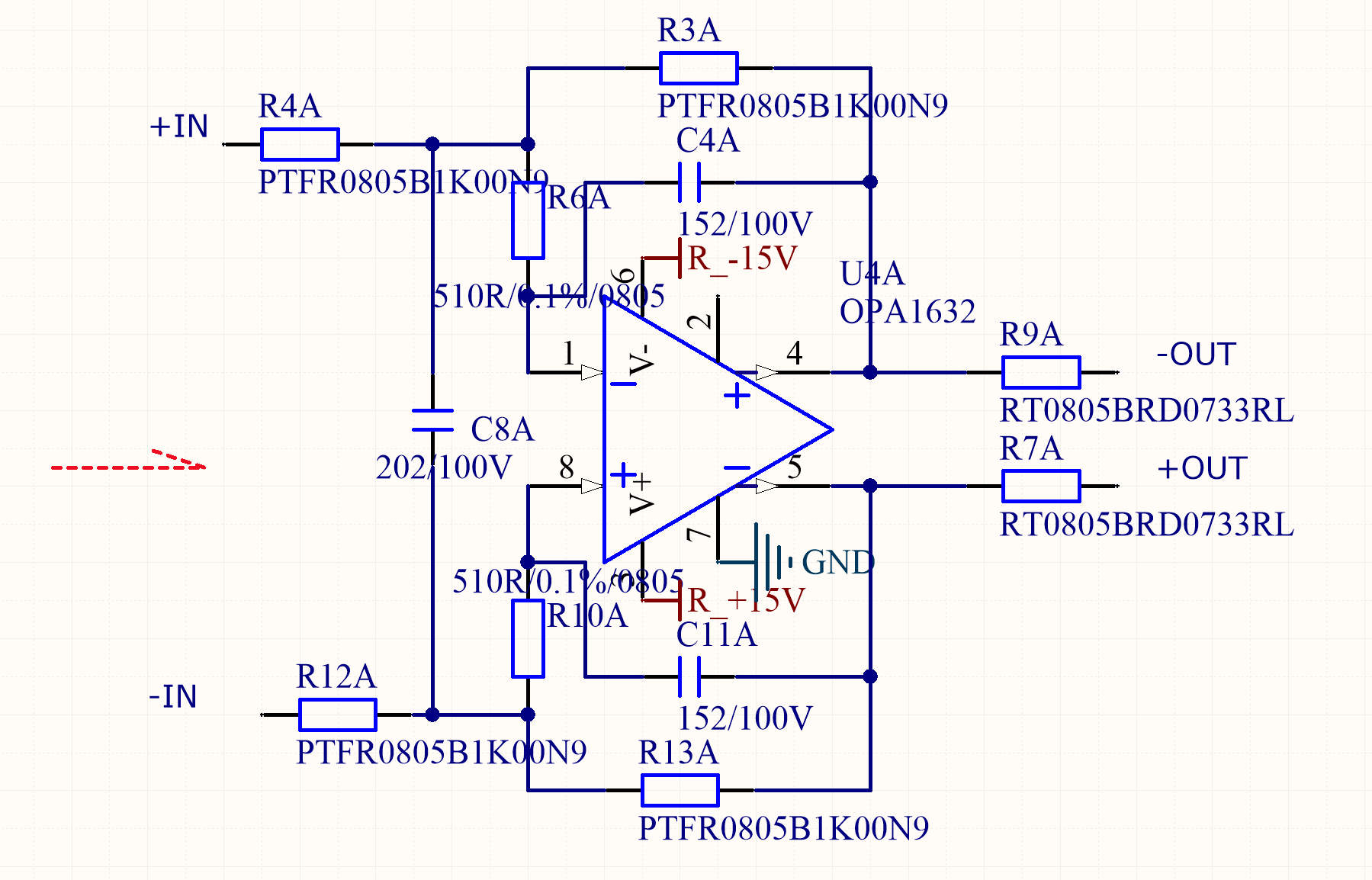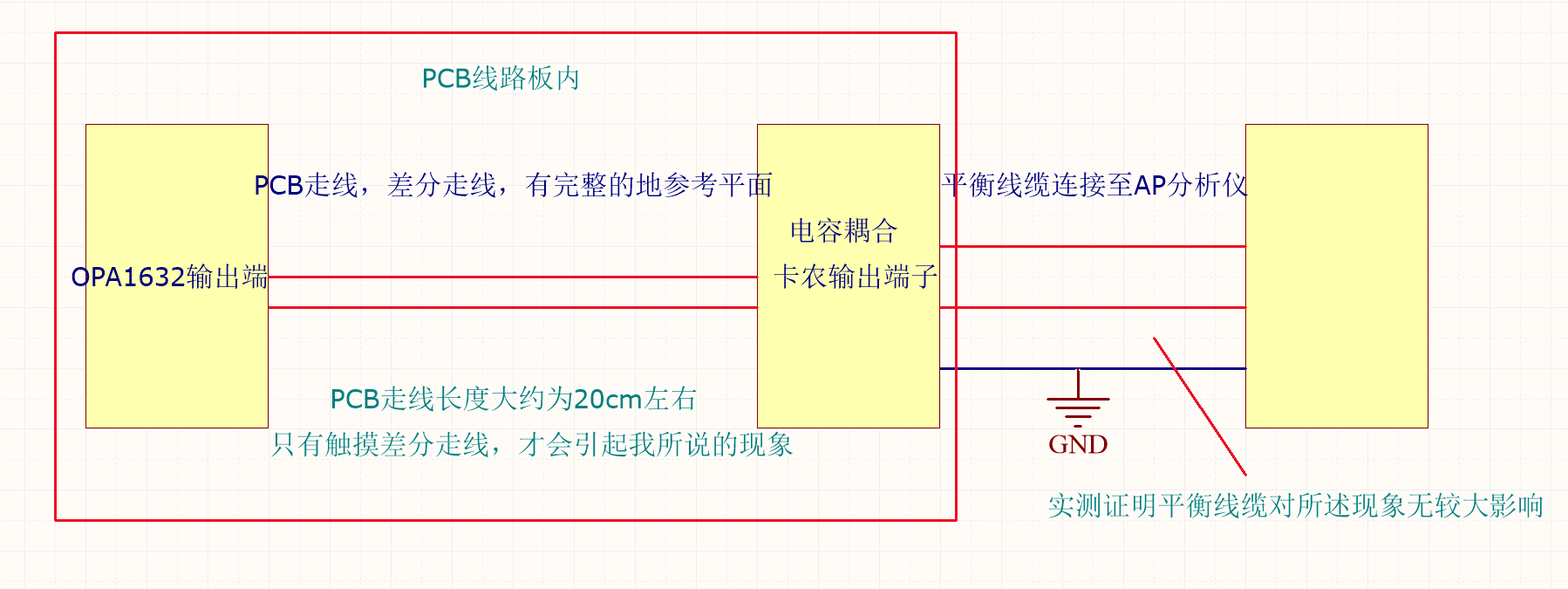Hi Team,
The audio DAC is designed using the OPA1632 to design the LPF circuit, which is placed after the IV circuit as shown in the following figure:

The circuit is simulated and has no problem, but practical testing found that one channel THD+N is significantly higher than the other(about 8 dB, which can be said to be very large.) when testing the THD+N with an AP analyzer.
The traces on the audio output on the PCB board are long and the degraded channel traces are longer than the quality channel. The strange thing is that the THD+N has improved by more than 10dB by touching the audio output line of a degraded channel with your hand. The THD+N will become degraded again when released.
The customer assumes that touching with hands changes the capacitance between audio transmission lines. But why is that? The filter limits the bandwidth of the OPA1632 to less than 100K, but is so sensitive to the inter-transmission line capacitance.
In addition, different filter parameters produce different results, such as between the head and end of the transmission line, where only touching a particular segment of the transmission line affects the THD. This position will change when the filter parameters are changed. Also, the input impedance of the AP analyzer also affects the effectiveness of the touch position.
Could you help check this case? Thanks.
Best Regards,
Cherry


